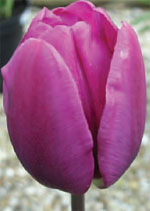Content
Types of inflorescence
 |
Figure 7.1 Euphorbia
cyparissias ‘Fens Ruby’ |
The organs of sexual reproduction in the flowering plant division are
flowers, and variation in their arrangement can be identified and named:
 |
Figure 7.2 Range of flowers as organs of sexual reproduction
having similar basic structure, but varying appearance having
adapted for successful pollination or by plant breeding (see
Pollination & Fertilization) (a) Iris chrysographes ‘Kew Black’; (b)
Eryngium giganteum, (‘Miss Willmott’s ghost’);
(c) Trollius
chinensis ‘Golden Queen’; (d) Rosa ‘L.D.Braithwaite’;
(e) Hemerocallis
Rajah’; (f) Aquilegia fragrans; (g) Oenothera
‘Apricot Delight;
(h) Helenium ‘Wyndley’; (i) Helleborus
xhybridus; (j) Nepeta
nervosa; (k) Primula vialii |
- spike is an individual, unstalked series of flowers on a single flower
stalk, e.g. Verbascum;
- raceme consists of individual stalked flowers, the stalks all the same
length again spaced out on a single undivided main flower stalk, e.g.
foxglove (see Figure 7.3), hyacinth, lupin, wallflower;
- compound racemes have a number of simple racemes arranged in
sequence on the flower stalk, e.g. grasses;
- corymb is similar to a raceme except that the flower stalks, although
spaced out along the main stalk, are of different lengths so that the
flowers are all at the same level, e.g. Achillea (see Figure 7.3). A very
common sight in hedgerows;
- umbel has stalked flowers reaching the same height with the stalks
seeming to start at the same point on the main stem, e.g. hogweed
(see Figure 7.3);
- capitulum or composite flower forms a disc carrying flower parts
radiating out from the centre, as if compressed from above, e.g. Inula (see Figure 7.3), daisy, chrysanthemum.
The number and arrangement of flower parts are the most important
features for classification and are a primary feature in plant identification
(see Classification and naming).
 |
Figure 7.3 Inflorescence types, (a) spike;
Verbascum (b) raceme; Foxglove and (c)
Veronica; (d) corymb, Achillea; (e) umbel,
Hogweed; (f) capitulum, Inula |
Flower structure
The flower structure is shown in Figure 7.4.
The flower is initially protected inside a flower bud by the calyx or ring
of sepals, which are often green and can therefore photosynthesize. The
development of the flower parts requires large energy expenditure by the plant, and therefore vegetative activities decrease. The corolla or ring of
petals may be small and insignificant in wind-pollinated flowers, e.g.
grasses, or large and colourful in insect-pollinated species. The colour and size of petals can be improved in cultivated
plants by breeding, and may also involve the multiplication of the petals
or petalody, when fewer male organs are produced.
The flower may include other parts:
- Tepals, where the outer layers of the flower have a similar appearance,
making the sepals and petals indistinguishable. They are common in
monocotyledons such as tulips (see Figure 7.5) and lilies.
- Androecium, the male organ, consists of a stamen which bears an anther that produces and discharges the pollen grains.
- Gynaecium, the female organ, is positioned in the centre of the flower
and consists of an ovary containing one or more ovules (egg cells).
The style leads from the ovary to a stigma at its top where pollen is
captured.
- The flower parts are positioned on the receptacle, which is at the tip
of the pedicel (flower stalk).
- Nectaries may develop on the receptacle, at the base of the petals;
these have a secretory function, producing substances such as nectar
which attract pollinating organisms.
- Associated with the flower head or inflorescence are leaf-like
structures called bracts, which can sometimes assume the function of
insect attraction, e.g. in Poinsettia.
The flowers of many species have both male and female organs
(hermaphrodite), but some have separate male and female flowers
(monoecious), e.g. Cucurbita, walnut, birch ( Betula), whereas others
produce male and female flowers on different plants (dioecious), e.g.
holly, willows, Skimmia japonica and Ginkgo biloba.
 |
Figure 7.4 Flower structure, e.g. (a) flower of Glaucium corniculatum and
(b) diagram
of typical
flower to show structures involved in the
process of
sexual reproduction. |
 |
Figure 7.5 Tulip ‘Attila’,
e.g. of tepals – outer
layers of flower are
similar |
|









